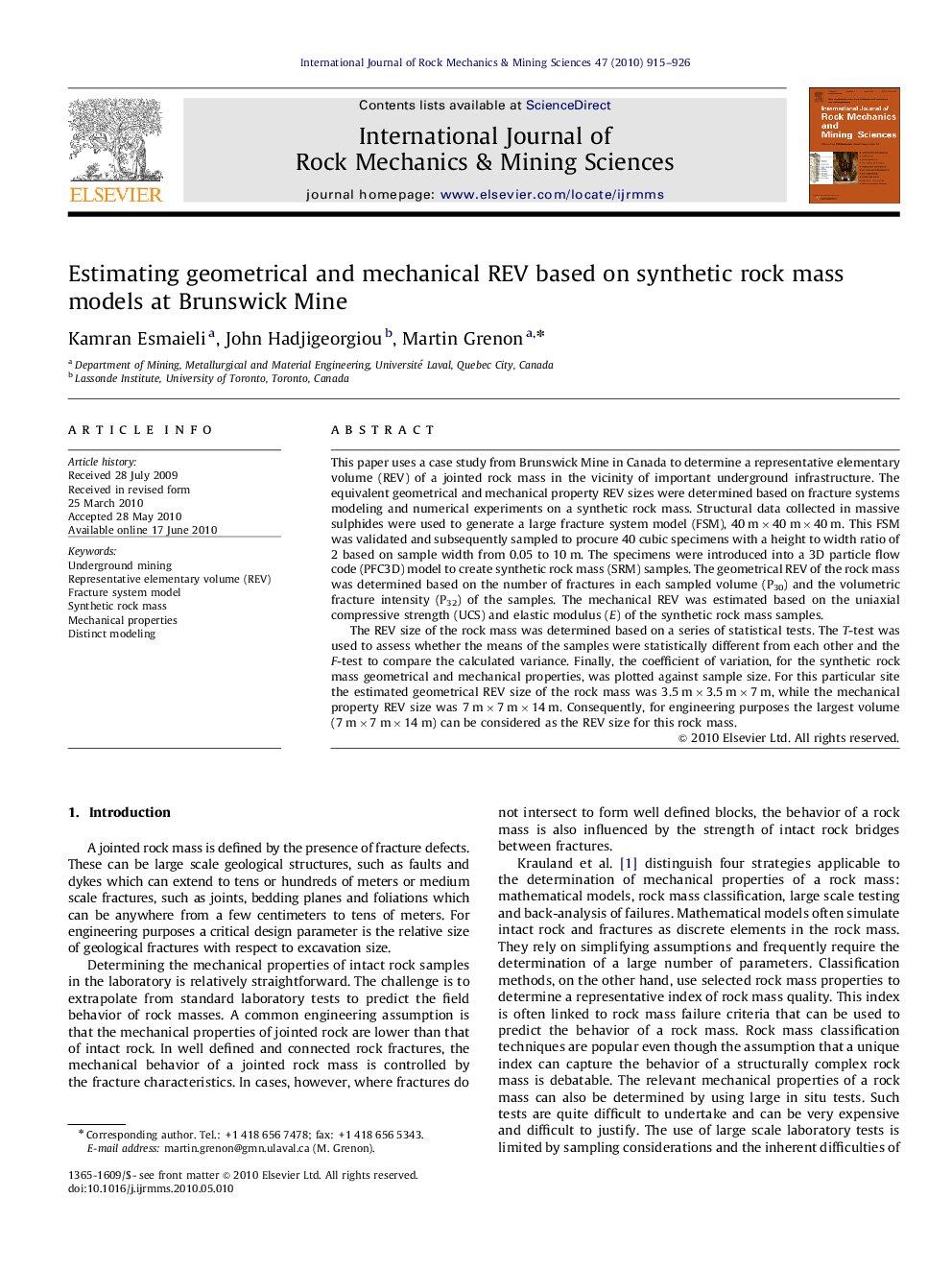| Article ID | Journal | Published Year | Pages | File Type |
|---|---|---|---|---|
| 810153 | International Journal of Rock Mechanics and Mining Sciences | 2010 | 12 Pages |
This paper uses a case study from Brunswick Mine in Canada to determine a representative elementary volume (REV) of a jointed rock mass in the vicinity of important underground infrastructure. The equivalent geometrical and mechanical property REV sizes were determined based on fracture systems modeling and numerical experiments on a synthetic rock mass. Structural data collected in massive sulphides were used to generate a large fracture system model (FSM), 40 m×40 m×40 m. This FSM was validated and subsequently sampled to procure 40 cubic specimens with a height to width ratio of 2 based on sample width from 0.05 to 10 m. The specimens were introduced into a 3D particle flow code (PFC3D) model to create synthetic rock mass (SRM) samples. The geometrical REV of the rock mass was determined based on the number of fractures in each sampled volume (P30) and the volumetric fracture intensity (P32) of the samples. The mechanical REV was estimated based on the uniaxial compressive strength (UCS) and elastic modulus (E) of the synthetic rock mass samples.The REV size of the rock mass was determined based on a series of statistical tests. The T-test was used to assess whether the means of the samples were statistically different from each other and the F-test to compare the calculated variance. Finally, the coefficient of variation, for the synthetic rock mass geometrical and mechanical properties, was plotted against sample size. For this particular site the estimated geometrical REV size of the rock mass was 3.5 m×3.5 m×7 m, while the mechanical property REV size was 7 m×7 m×14 m. Consequently, for engineering purposes the largest volume (7 m×7 m×14 m) can be considered as the REV size for this rock mass.
